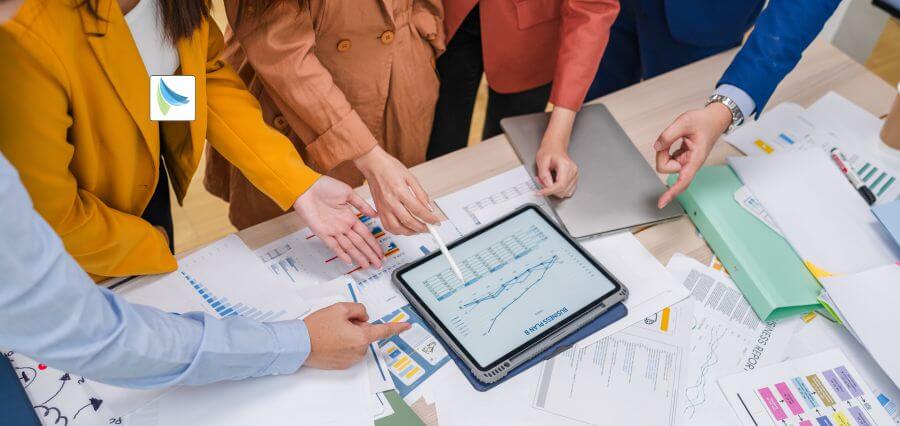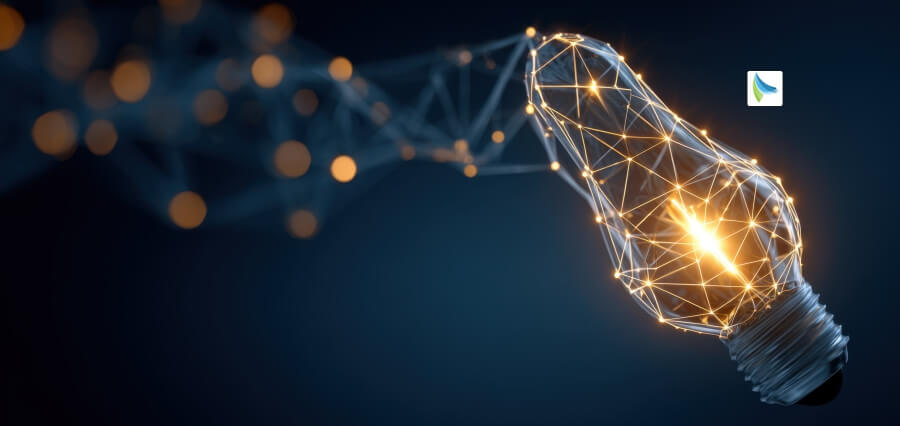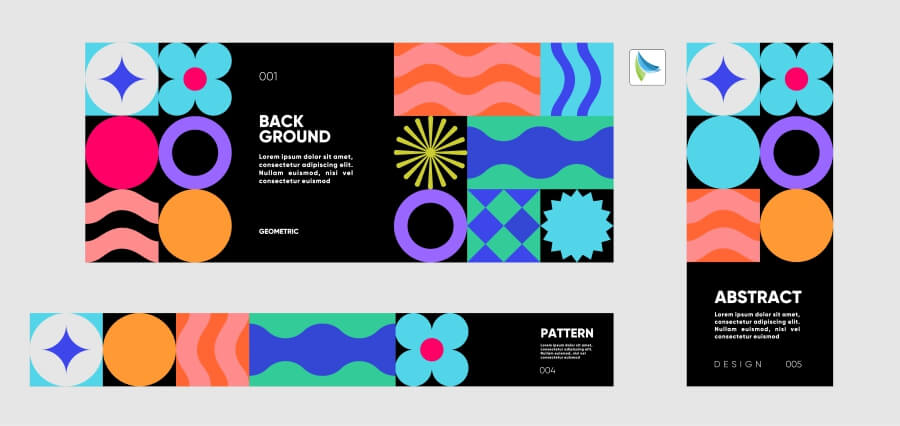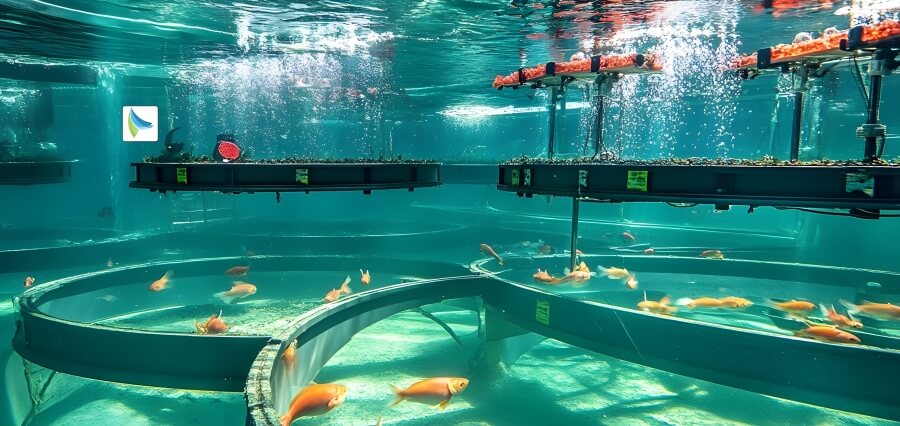From Nets to Networks
Aquaculture practices that were once intense and low-tech-based with ponds and cages have been experiencing a revolution fueled by contemporary aquaculture trends in technology. The coupling of digital connectivity, automation, precision monitoring, mitigation systems, and even cellular approaches is coming together to transform the economics, ecology, and scalability of any seafood production globally.
Recirculating Aquaculture Systems (RAS): Closed‑Loop Efficiency
The most advanced form of aquaculture is Recirculating Aquaculture Systems (RAS). Such land-based, closed-loop farms recycle up to 99 percent of the water, filtering waste both mechanically and biologically and giving great control over environmental factors such as temperature, oxygen, and pH.
RAS offers major benefits:
- Greatly reduced water usage and pollutionAquaculture
- Biosecurity involves isolating fish from pathogens and disease vectors
- Urban or inland deployment closer to consumers
A noteworthy example is a major RAS expansion by Huon Aquaculture in Tasmania, which is scheduled to be one of the largest freshwater nurseries in the southern hemisphere, radically increasing feed efficiency and sustainability.
Precision Aquaculture: Sensors, AI, and Data‑Driven Management
IoT sensors, AI, and machine learning are used in precision aquaculture, enabling real-time monitoring and control of production. The sensors monitor the supply of oxygen, ammonia, salinity, and fish activity; AI algorithms help to forecast disease outbreaks, efficient work schedules, and feed reduction.
More recent academic deployments are computer-vision-based systems to feed tilapia: estimating the size and quantity of fish using YOLO v8 and IoT-based water sensors, with an accuracy of 94%, potentially up to 58x more productive relative to traditional methods. It is an example of one of the most significant trends in aquaculture technology, the concept of real-time, automated decision-making.
Automation, Robotics, and Digital Twins
The desire to eliminate human interaction in remote or hostile marine environments has amplified the pace of automatic systems. Net inspections, fish health, and biofouling cleaning, as well as cage inspection, are no longer performed by divers, but rather by autonomous underwater vehicles (AUVs) or drones.
One of the recent innovations is the application of digital twin models to net cage surveillance. A Norwegian project developed a multi-fidelity digital twin by integrating both low-fidelity and high-fidelity sensor data to give real-time predictions of structural stress, displacement, and load in mooring systems, thereby significantly enhancing maintenance planning and minimizing stock loss risks.
Integrated Environmental Systems: IMTA, Aquaponics, Biofloc
Environmental sustainability is a key driver behind emerging integrated systems:
- Integrated Multi-Trophic Aquaculture (IMTA) is a mixture of fed species (e.g., fish) and so-called extractive species (e.g., seaweed, shellfish) whereby waste of one species forms input for another species to achieve greater ecosystem health and spread risks in revenue generation.
- Aquaponics and Integrated Aqua-Vegeculture Systems, like iAVS or floating aquageoponics, direct fish effluent to raise vegetable plants, purify waste, and make more food.
- The Biofloc Technology (BFT) enhances microbial communities to produce edible protein by transforming the nitrogenous waste in a more efficient and less polluting pathway.
These establishments are representative of a more macroscopic shift toward circular, resource-efficient frameworks of aquaculture.
Sustainable Feed Alternatives and Circular Biotech
Feed has been known to depend largely on fishmeal and fish oil, which overstresses wild fishing. There is a trend in aquaculture towards new technology, which is changing towards:
- Insect meal (e.g., black soldier fly larvae)
- Algae‑based omega‑3 sources
- Microbial protein from CO₂ bioconversion (e.g., Kiverdi’s bacterial systems)
These options take less pressure off wild stocks and are in line with the principles of the circular economy.
Blockchain & Traceability
There is also consumer pressure towards transparency using blockchain to track seafood from the pond or net to the plate. Blockchain offers the unalterable history of feed types, medication, harvest date, and transport, which enhances trust, allows ethical sourcing, and complies with regulatory scrutiny. This system encourages eco-certification and assists farmers in distinguishing products within high-priced markets.
Offshore, Urban, and Vertical Aquaculture
As terrestrial coastline space dwindles, new aquaculture technology trends are moving offshore and inland:
- In offshore fish farming, strong submersible net cages are applied deep within the ocean water. These minimize the impact on the shoreline and utilize natural currents to disperse the waste, combined with distant automated feeding systems.
- Vertical and urban systems, including fish-and-vegetable towers or modular systems based on cubes, incorporate aquaculture into the built landscape. This innovative technology is three-dimensional, encourages local manufacturing, has less transportation impact, and optimizes available space.
Synthesis and Outlook
The convergence of aquaculture technology trends- networks of sensors, advanced breeding, alternative protein, and circular systems- is redefining an industry once simple. The effects are:
- Improved sustainability through water recycling (RAS), waste reuse (IMTA, biofloc), and feed innovation
- Better results in productivity, profitability, and precision systems and automation
- Increased traceability and resilience, improved via genetics and blockchain
- Wider reach and extensibility, by taking farming to an urban setting or basing it on a floating platform
There are still struggles, large initial capital requirement of RAS, regulatory confusion regarding gene editing or cell-cultured seafood, smallholder community uptake of technology, and consumer willingness. Yet the trend is evident. Aquaculture is transforming into a dynamic network of smart, connected, and sustainable systems. As these trends in aquaculture technology continue to grow, they not only are creating a new industry, but they are also redefining the future of our food systems.
Read More : Mapping the Future of Aquaculture Business Growth












